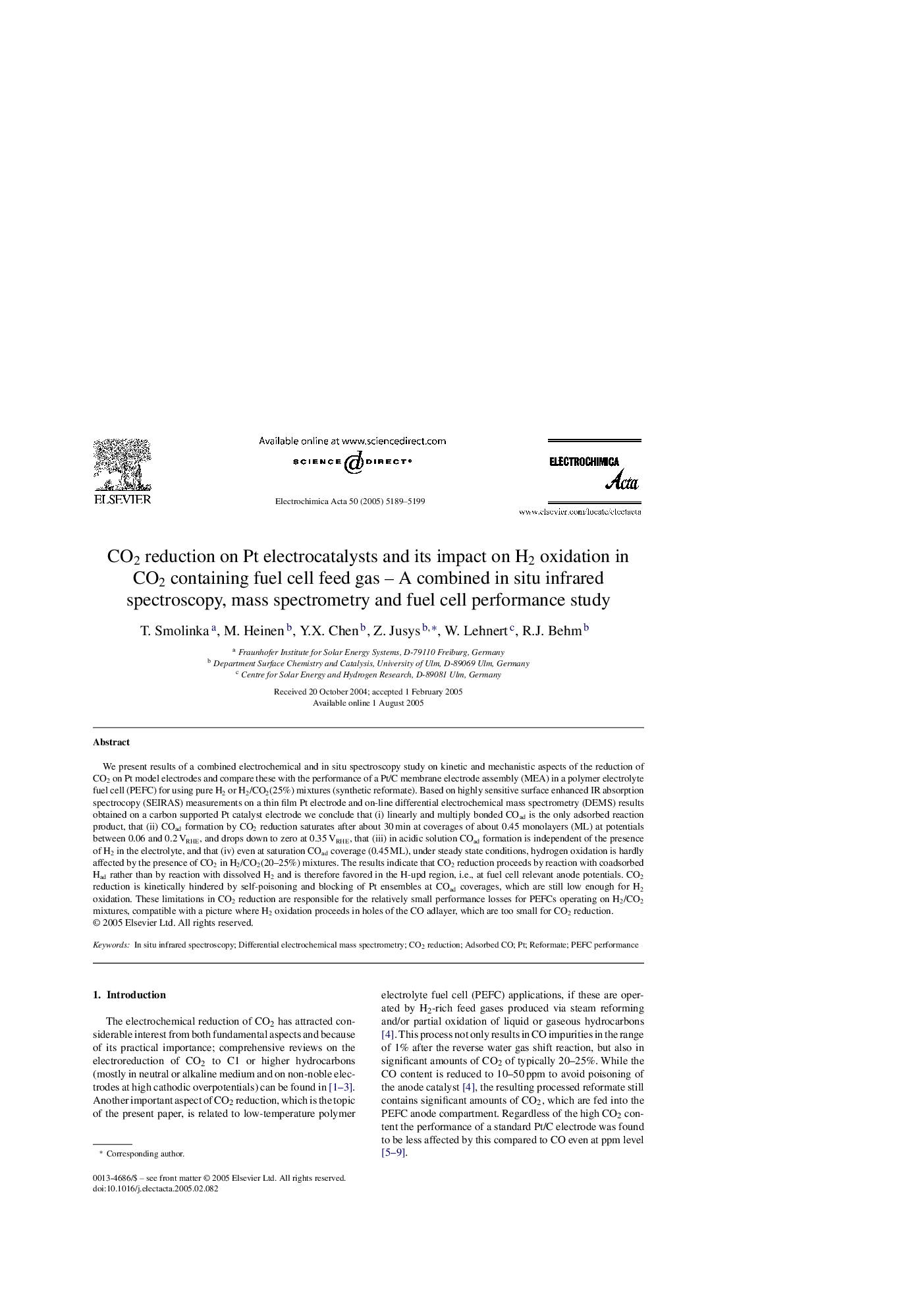| Article ID | Journal | Published Year | Pages | File Type |
|---|---|---|---|---|
| 197045 | Electrochimica Acta | 2005 | 11 Pages |
We present results of a combined electrochemical and in situ spectroscopy study on kinetic and mechanistic aspects of the reduction of CO2 on Pt model electrodes and compare these with the performance of a Pt/C membrane electrode assembly (MEA) in a polymer electrolyte fuel cell (PEFC) for using pure H2 or H2/CO2(25%) mixtures (synthetic reformate). Based on highly sensitive surface enhanced IR absorption spectrocopy (SEIRAS) measurements on a thin film Pt electrode and on-line differential electrochemical mass spectrometry (DEMS) results obtained on a carbon supported Pt catalyst electrode we conclude that (i) linearly and multiply bonded COad is the only adsorbed reaction product, that (ii) COad formation by CO2 reduction saturates after about 30 min at coverages of about 0.45 monolayers (ML) at potentials between 0.06 and 0.2 VRHE, and drops down to zero at 0.35 VRHE, that (iii) in acidic solution COad formation is independent of the presence of H2 in the electrolyte, and that (iv) even at saturation COad coverage (0.45 ML), under steady state conditions, hydrogen oxidation is hardly affected by the presence of CO2 in H2/CO2(20–25%) mixtures. The results indicate that CO2 reduction proceeds by reaction with coadsorbed Had rather than by reaction with dissolved H2 and is therefore favored in the H-upd region, i.e., at fuel cell relevant anode potentials. CO2 reduction is kinetically hindered by self-poisoning and blocking of Pt ensembles at COad coverages, which are still low enough for H2 oxidation. These limitations in CO2 reduction are responsible for the relatively small performance losses for PEFCs operating on H2/CO2 mixtures, compatible with a picture where H2 oxidation proceeds in holes of the CO adlayer, which are too small for CO2 reduction.
